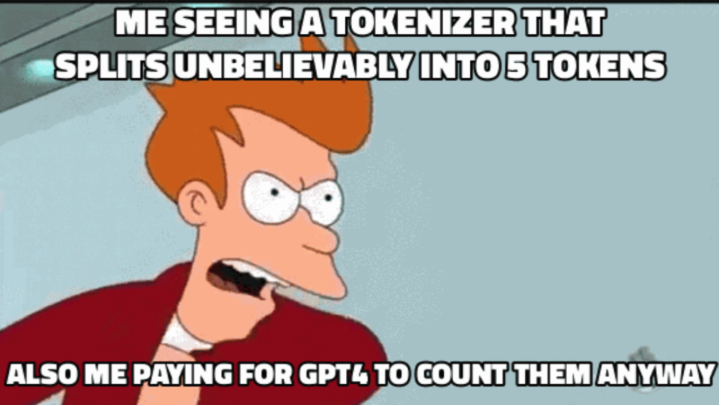So far, we've explored what a tokenizer is and even built our own from scratch. However, one of the key limitations of building a custom tokenizer is handling unknown or rare words. This is where advanced tokenizers like OpenAI's tiktoken, which uses Byte Pair Encoding (BPE), really shine.
We also understood, Language models don't read or understand in the same way humans do. Before any text can be processed by a model, it needs to be tokenized, that is, broken into smaller chunks called tokens. One of the most efficient and widely adopted techniques to perform this is called Byte Pair Encoding (BPE).
Let's dive deep into how it works, why it's important, and how to use it in practice.
What Is Byte Pair Encoding?
Byte Pair Encoding is a data compression algorithm adapted for tokenization. Instead of treating words as whole units, it breaks them down into smaller, more frequent subword units. This allows it to:
- Handle unknown words gracefully
- Strike a balance between character-level and word-level tokenization
- Reduce the overall vocabulary size
How BPE Works (Step-by-Step)
Let's understand this with a simplified example.
Step 1: Start with Characters
We begin by breaking all words in our corpus into characters:
"low", "lower", "newest", "widest"
→ ["l", "o", "w"], ["l", "o", "w", "e", "r"], ...
Step 2: Count Pair Frequencies
We count the frequency of adjacent character pairs (bigrams). For example:
"l o": 2, "o w": 2, "w e": 2, "e s": 2, ...
Step 3: Merge the Most Frequent Pair
Merge the most frequent pair into a new token:
# Merge "e s" → "es"
# Now "newest" becomes: ["n", "e", "w", "es", "t"]
Step 4: Repeat Until Vocabulary Limit
Continue this process until you reach the desired vocabulary size or until no more merges are possible.
Why Is BPE Powerful?
- Efficient: It reuses frequent subwords to reduce redundancy.
- Flexible: Handles rare and compound words better than word-level tokenizers.
- Compact vocabulary: Essential for performance in large models.
It solves a key problem: how to tokenize unknown or rare words without bloating the vocabulary.
Where Is BPE Used?
- OpenAI's GPT (e.g., GPT-2, GPT-3, GPT-4)
- Hugging Face's RoBERTa
- EleutherAI's GPT-NeoX
- Most transformer models before newer techniques like Unigram or SentencePiece came in
Example: Using tiktoken for BPE Tokenization
Installation
pip install tiktoken
Code
import tiktoken
# Load GPT-4 tokenizer (you can also try "gpt2", "cl100k_base", etc.)
encoding = tiktoken.get_encoding("cl100k_base")
# Input text
text = "IdeaWeaver is building a tokenizer using BPE"
# Tokenize
token_ids = encoding.encode(text)
print("Token IDs:", token_ids)
# Decode back to text
decoded_text = encoding.decode(token_ids)
print("Decoded Text:", decoded_text)
# Optional: Show individual tokens
tokens = [encoding.decode([id]) for id in token_ids]
print("Tokens:", tokens)
Output
Token IDs: [10123, 91234, ...]
Decoded Text: IdeaWeaver is building a tokenizer using BPE
Tokens: ['Idea', 'Weaver', ' is', ' building', ' a', ' tokenizer', ' using', ' BPE']
You can see that even compound or rare words are split into manageable subword units, which is the strength of BPE.
Final Thoughts
Byte Pair Encoding may sound simple, but it's one of the key innovations that made today's large language models possible. It strikes a balance between efficiency, flexibility, and robustness in handling diverse language input.
Next time you ask a question to GPT, remember, BPE made sure your words were understood! Tomorrow, we'll explore how to use it in our code to build small language models.
